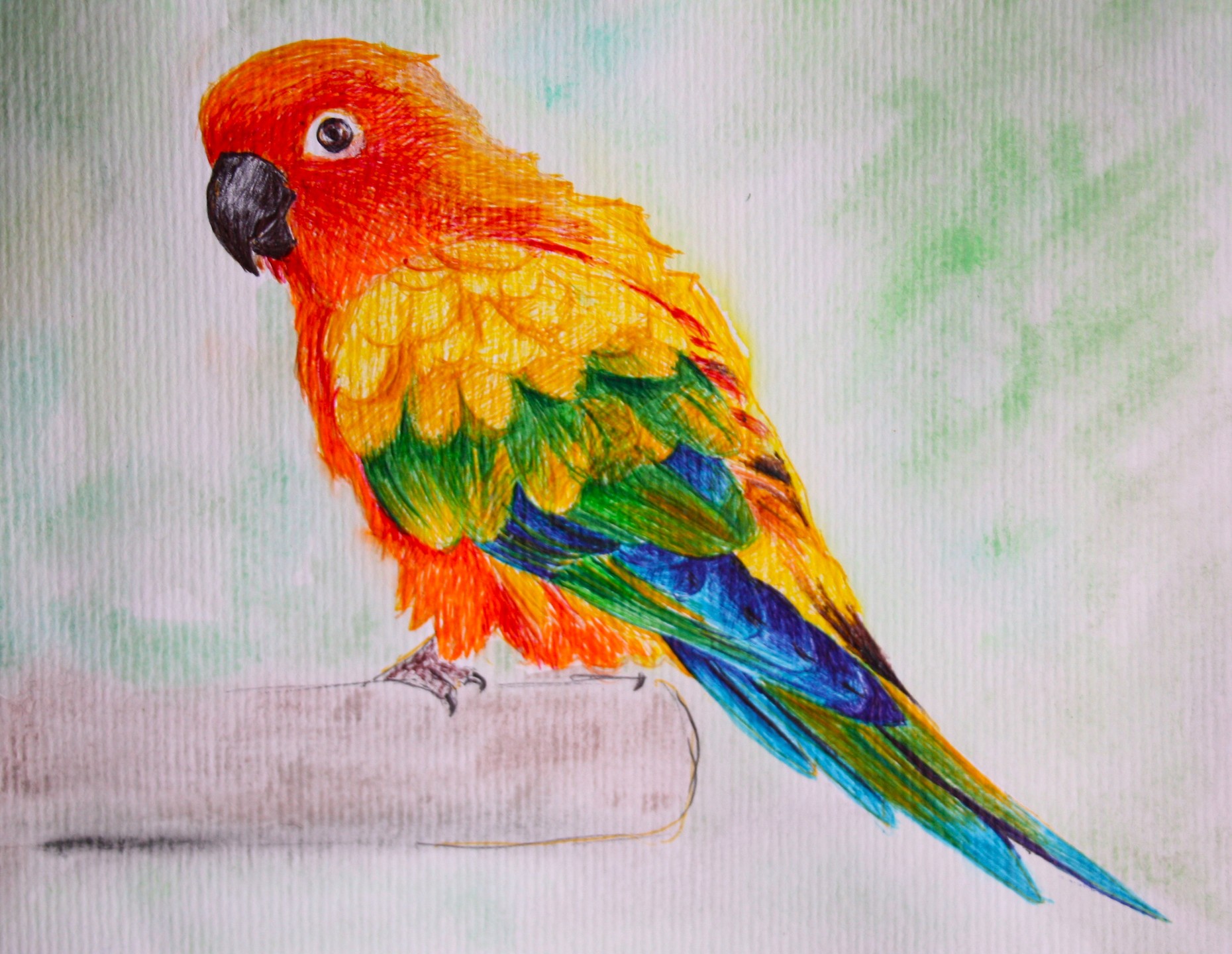Ballpoint pen and watercolour on paper.
Animal: Sun conure (Aratinga solstitialis) :
- They live in the dry forests of Guyana and Brazil but can also be seen flying through savannah areas. There are about 1000-4000 individuals left in the wild.
They are often seen up in the treetops, feeding in groups of 20 or more. They feed on fruit, nuts, seeds and berries.
Nests are made in tree hollows and between 1 to 4 eggs are laid that are incubated by the female for around 1 month. The young fledge (are ready to leave the nest) at around 8 weeks old.
- Sun Conures can live up to 20 years in the wild, and up to 30 years in captivity.
- Their adult plumage is predominantly golden-yellow with orange in the face and belly and red around the ears. The sun conure tail is an olive-green color with a blue tip. They have a black bill, bare legs and a grey eye-ring which often fades to white while in captivity.
2. Why they are endangered?
These birds are hunted and collected from the wild for their beautiful plumage, with about 800,000 each year being exported for the pet trade. Combined with habitat loss their population numbers in the wild are declining very rapidly, and it's believed that today there are more sun conures in captivity than in the wild.
Today they are considered extirpated in southern Guyana where it was previously regarded as common, has become rare in the Brazilian state of Roraima, and it's also considered very rare in French Guiana.
